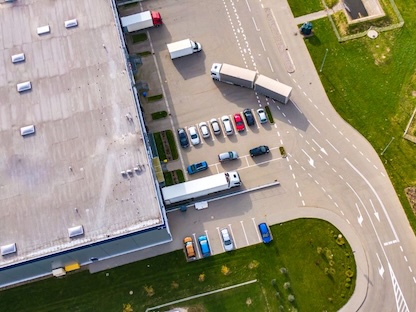Niche real estate types have long thrived in the broader industrial market, with categories such as cold storage and specialized manufacturing rising and falling in cycles. But in recent years, one of the fastest-growing subsectors has been industrial outdoor storage (IOS), according to CommercialCafe’s September National Industrial Report.
The sector’s growth has been fueled by its low costs and flexibility, offering solutions at a time when supply chain disruptions and shifting trade policy have pressured occupiers to maximize efficiency. As CommercialCafe says in its report, IOS facilities serve a range of uses, from overflow storage and vehicle parking to bulk material yards and infill locations, making them increasingly attractive to tenants and investors.
Supply, however, has not kept pace. Zoning constraints and the frequent redevelopment of IOS sites into higher-value properties have limited availability. That imbalance has driven rents sharply higher, according to CommercialCafe. Newmark reports that IOS rents have surged 123% since 2020, with inland hubs such as Memphis, Atlanta and Phoenix among the hottest markets.
Historically, most IOS properties have been privately held with non-standardized pricing. But institutional players are beginning to take a larger stake. PwC estimated the IOS market at about $200 billion in 2023, with $1.7 billion raised that year alone. Since then, activity has accelerated.
This year, Peakstone Realty Trust acquired a 51-asset IOS portfolio for $490 million, while Barings and Brennan Investment Group launched a joint venture targeting $150 million in IOS investments. Realterm also purchased a 13-property portfolio for $277 million. Analysts expect the asset class to become increasingly institutionalized, with standardized pricing models and growing confidence among lenders.
Still, challenges remain. As CommercialCafe says in its report, local governments and residents often push back against IOS developments, constraining supply even as new demand drivers emerge. Analysts note that future growth could come from the storage needs of technologies such as drone delivery systems and autonomous trucks.
The broader U.S. industrial market remains solid. CommercialCafe reported that in-place rents reached $8.66 per square foot in August, up three cents from July and 6.1% higher year-over-year. Developers are also pressing ahead: 338.3 million square feet of industrial space is under construction nationally, representing a projected inventory increase of 1.6%. By the end of August, 205.4 million square feet had already been delivered this year.
Manufacturing projects represent 28% of the pipeline, though they have accounted for just 14% of new starts since early 2023, according to CommercialCafe. That’s because manufacturing facilities take longer to complete than logistics projects, keeping them in the pipeline longer. After peaking in 2024, new manufacturing development has slowed considerably. Between 2021 and 2024, about 200 million square feet of space broke ground, but starts so far this year total less than 20 million square feet.
The slowdown is reflected in investment data. The U.S. Census Bureau reported annualized manufacturing construction spending of $223.1 billion in July 2025, down 7% from the record set in August 2024. Even so, spending remains more than triple its 2020 levels.
Industrial property sales reached $43.2 billion through August, averaging $137 per square foot. Notable deals include LG’s $2 billion buyout of GM’s stake in their Ultium Cells battery plant in Lansing, Michigan. The 2.8-million-square-foot facility is set to produce electric vehicle batteries, though GM has scaled back EV production amid softer demand.
Still, momentum in the EV sector persists. Toyota recently placed a $1.5 billion battery order, and GM continues to back plants in Ohio and Tennessee.




